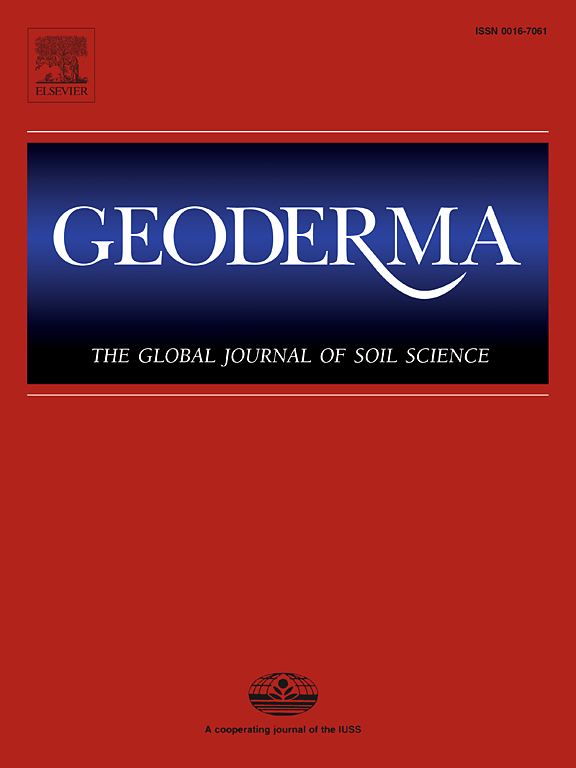Developing a multi-criteria assessment model for soil primary productivity in double cropping systems: Insights from the North China Plain
IF 5.6
1区 农林科学
Q1 SOIL SCIENCE
引用次数: 0
Abstract
Soil, one of the Earth’s most critical natural resources, supports global agricultural production and underpins key ecosystem services. Among the multiple functions soil performs, primary productivity stands out as a crucial element, pivotal for ensuring food security as the basis of the agricultural system. This study aimed to develop a multi-criteria assessment model for soil primary productivity at field scale, drawing insights from the winter wheat − summer maize rotation systems in the North China Plain. The development of the model followed the Decision Expert (DEX) methodology, using an integrated approach that combines knowledge graph and data mining techniques. We systematically structured the knowledge underpinning soil primary productivity. Utilising datasets derived from long-term field experiments and smallholder farms, the model was subjected to an iterative process of calibration and validation, enhancing both its predictive accuracy and operational applicability. The developed DEX model consists of 28 input attributes that encompass soil properties, field management practices, and meteorological conditions. The model achieved an accuracy of 71% in assessing soil primary productivity in the experimental field dataset after calibration, and 62% in the smallholder farm dataset as model validation. The developed model can effectively assess soil primary productivity function and facilitate the improvement of soil management. The innovative integration of knowledge-based and data-driven approaches proved to be effective. It is expected that the developed model can be integrated with other soil function models into a soil health decision support system that provides a holistic approach to soil health assessment and optimisation of field practices.
华北平原双季制土壤初级生产力多指标评价模型的建立
土壤是地球上最重要的自然资源之一,支持着全球农业生产,支撑着关键的生态系统服务。在土壤发挥的多种功能中,初级生产力作为一个关键因素脱颖而出,作为农业系统的基础,它对确保粮食安全至关重要。本研究旨在借鉴华北平原冬小麦-夏玉米轮作系统的经验,建立农田尺度土壤初级生产力的多指标评价模型。该模型的开发遵循决策专家(DEX)方法,使用结合知识图和数据挖掘技术的集成方法。我们系统地构建了支持土壤初级生产力的知识。利用来自长期野外实验和小农农场的数据集,对该模型进行了反复校准和验证,从而提高了其预测准确性和操作适用性。开发的DEX模型由28个输入属性组成,包括土壤属性、田间管理实践和气象条件。该模型在标定后的实验田数据集评估土壤初级生产力的准确率为71%,在小农数据集进行模型验证的准确率为62%。该模型能有效地评价土壤初级生产力功能,有利于土壤管理的改进。事实证明,以知识为基础的方法和数据驱动的方法的创新整合是有效的。期望所开发的模型可以与其他土壤功能模型集成到土壤健康决策支持系统中,为土壤健康评估和田间实践优化提供整体方法。
本文章由计算机程序翻译,如有差异,请以英文原文为准。
求助全文
约1分钟内获得全文
求助全文
来源期刊

Geoderma
农林科学-土壤科学
CiteScore
11.80
自引率
6.60%
发文量
597
审稿时长
58 days
期刊介绍:
Geoderma - the global journal of soil science - welcomes authors, readers and soil research from all parts of the world, encourages worldwide soil studies, and embraces all aspects of soil science and its associated pedagogy. The journal particularly welcomes interdisciplinary work focusing on dynamic soil processes and functions across space and time.
 求助内容:
求助内容: 应助结果提醒方式:
应助结果提醒方式:


